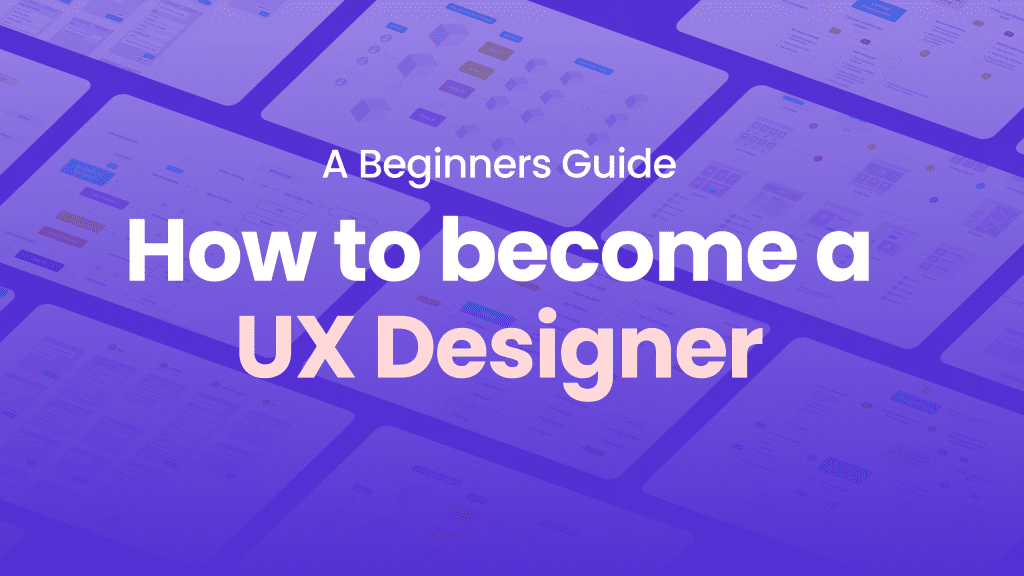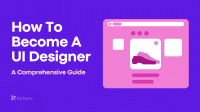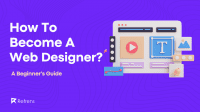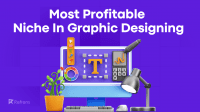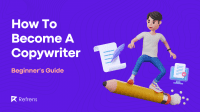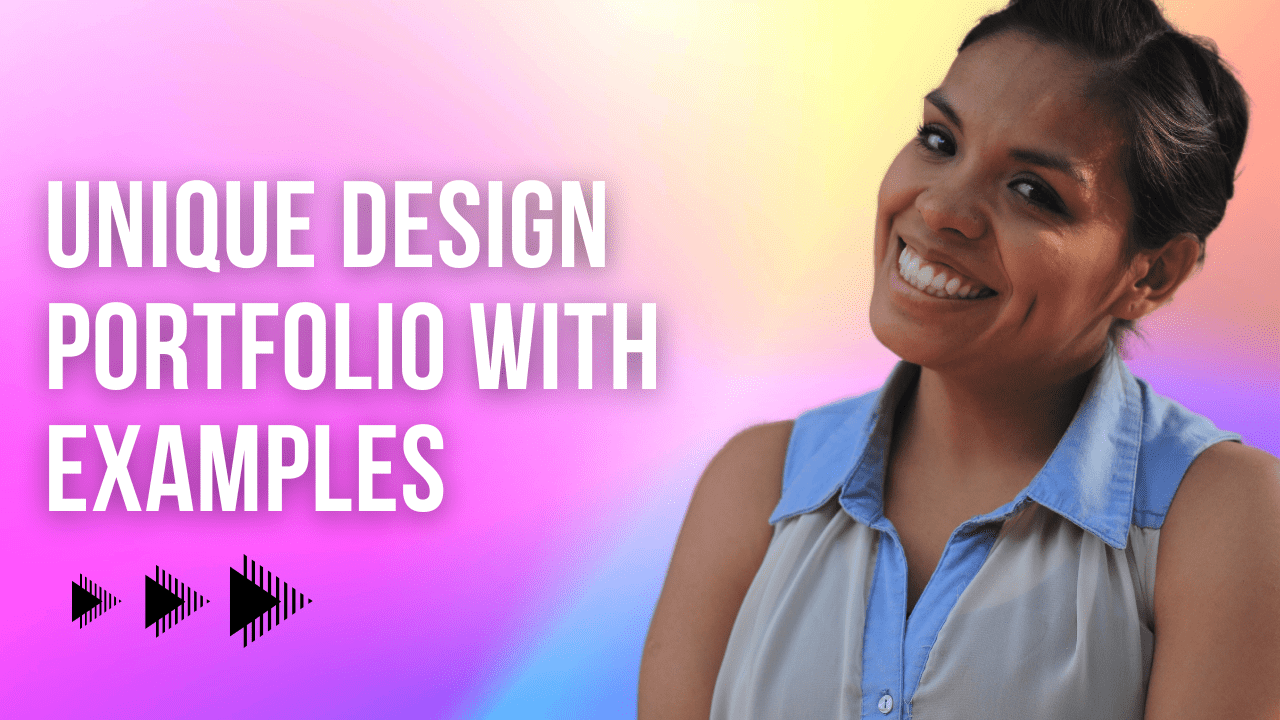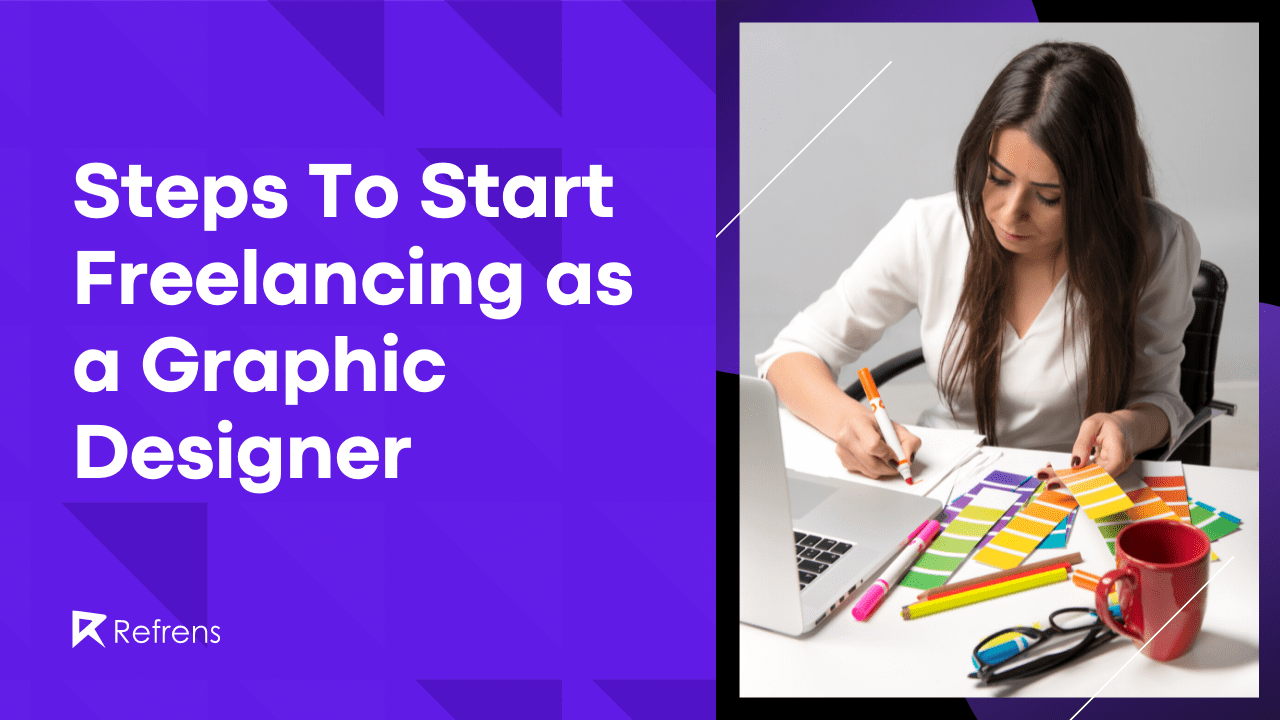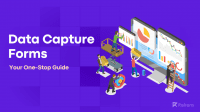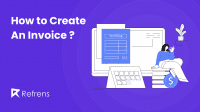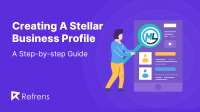Are you ready to become the Picasso of pixels, the Van Gogh of vector graphics, and the Leonardo da Vinci of… well, you get the idea.
Designing the ultimate user experience is not for the faint of heart, but fear not, my adventurous amigos!
With this beginner’s guide, you’ll be equipped with the tools and know-how to create digital masterpieces that will leave your users in awe.
So grab your sketchpad, power up your computer, and let’s dive into the wild and wondrous world of UX Design.
What is UX Design?
UX (User Experience) design is the process of designing digital products or services with a focus on creating a positive and meaningful user experience.
UX designers work to understand the needs and goals of the users and design solutions that are intuitive, easy to use, and enjoyable. In order to ensure that designs meet users’ needs and expectations, user research is conducted, personas and scenarios are created, wireframes and prototypes are designed, and prototypes are tested with users.
The goal of UX design is to create a product or service that is not only functional and usable but also delivers a positive and satisfying user experience.
For better understanding, let’s take a quick example from the food delivery app Swiggy:
When designing the UX for Swiggy, the focus is on creating a seamless user experience that makes it easy and convenient for customers to order food.
The app’s home screen provides clear categories to choose from, such as popular restaurants, cuisines, and deals, making it easy to find what you want. Once you select a restaurant, the app shows you the menu with pictures and prices, and provides options for customization, such as adding or removing ingredients.
Swiggy also incorporates user feedback into its UX design. For example, customers can rate and review restaurants, which helps other users make informed choices. Additionally, Swiggy’s delivery tracking feature keeps customers informed about the status of their order, from when the restaurant starts preparing the food to when it’s out for delivery.
Overall, Swiggy’s UX design aims to create a fast, convenient, and reliable food ordering experience for customers.
Hence, based on this example, we can conclude that the ultimate goal is to ensure that the process is simple for the user to follow and that his needs are met.
What Does A UX Designer Do?
The primary responsibility of a UX designer is to create a seamless and enjoyable user experience for digital products, such as websites, mobile apps, or software programs.
UX designers work closely with cross-functional teams, including product managers, developers, and visual designers, to understand the users’ needs and create products that meet those needs.
They conduct user research to gather insights into user behavior and preferences and use that data to inform their design decisions. UX designers also create wireframes, prototypes, and mockups to visualize the product’s user flow and interactions. Ultimately, the goal of a UX designer is to create a product that is easy to use, aesthetically pleasing, and meets the user’s needs, resulting in increased engagement and customer satisfaction.
Career Path Of a UX Designer
Like any profession, there is no single career path for a UX designer. Depending on the organization & your skills, experience, and goals; this path might vary. But let’s take a look at a typical career path.
Entry-level/Junior UX Designer
At the beginning of your career, you may start as an entry-level or junior UX designer. In this role, you will be responsible for assisting senior designers and conducting research, wireframing, prototyping, and testing designs. You may also be involved in user interviews, user testing, and competitor analysis.
Mid-level UX Designer
As you gain more experience, you can progress to a mid-level UX designer role in any web design company. In this role, you will have more responsibility for leading projects, conducting user research, creating user personas, developing information architecture, creating wireframes and prototypes, and conducting user testing. You may also have the opportunity to use mentoring platforms and mentor junior designers and collaborate with other teams, such as product management and engineering.
Senior UX Designer
A senior UX designer is a more advanced role where you will have extensive experience designing and leading UX projects. In this role, you will be responsible for developing UX strategies, leading user research efforts, creating high-fidelity prototypes, conducting user testing, and collaborating with other departments. You may also have the opportunity to manage a team of designers, develop design processes, and lead design workshops.
UX Design Manager/Director
As you progress in your career, you may have the opportunity to become a UX design manager or director. In this role, you will be responsible for managing a team of designers, developing and implementing design strategies, collaborating with other departments, and ensuring that the overall user experience is consistent across all products and services.
VP/Director of User Experience
This is the highest level of a UX career path, where you will be responsible for leading the entire UX department in an organization. In this role, you will be responsible for developing and implementing UX strategies, managing teams of designers and researchers, collaborating with other departments, and ensuring that the overall user experience is consistent and meets the needs of the organization and its users.
Are UX Designers in Demand?
The demand for UX/UI has only grown over the past five years as more and more firms have gone digital. By the end of 2028, the UX/UI market, which was worth USD 465 million in 2021, is anticipated to have increased to USD 1346 million.
According to a recent report by LinkedIn, UX design is one of the top skills that companies are looking for in 2022. The report also notes that the demand for UX designers has been steadily increasing over the past five years and is expected to continue growing.
Additionally, according to the Creative Group’s 2022 Salary Guide, UX designers are among the most in-demand creative professionals, with an expected salary range of $89,000 to $142,500 per year, depending on experience and location. This reflects a 3.7% increase in average starting salaries for UX designers compared to the previous year.
Overall, the data suggests that the demand for UX designers is strong and likely to continue growing in the future. The time is now to pursue a career in UX designing.
Is UX Design a good career path?
If you are interested in the intersection of design, psychology, and technology – UX design can be an interesting and rewarding career choice. Let’s see why:
- High demand
In today’s digital age, there is a high demand for UX designers who can create products that are user-friendly and meet the needs of consumers. Many companies, both large and small, are looking for UX designers to help them design and develop products that stand out in a competitive market.
- Competitive salary
According to Glassdoor, the average salary for a UX designer in the United States is around $90,000 per year. This can vary depending on your level of experience, location, and the company you work for. In addition, as you gain more experience and seniority, your earning potential can increase significantly.
- Creative and challenging work
UX design is a field that requires both creativity and problem-solving skills. As a UX designer, you will be responsible for creating user-centered designs that meet the needs of the user while also aligning with the company’s goals. This requires a balance of creativity, research, and technical skills, which can be challenging but also highly rewarding.
- Opportunity for growth
As you gain more experience in UX design, there are many opportunities for growth and advancement. You can specialize in a particular area, such as user research or UX strategy, or move into management roles. You can also work for different types of companies, such as startups or large corporations, and work on a variety of different projects.
In summary, UX design is a great career path for those who are interested in designing products that meet the needs of users. With high demand, competitive salaries, creative and challenging work, and opportunities for growth and advancement, UX design can be a rewarding and fulfilling career.
How Much Can You Earn As A UX Designer?
The salary of a UX designer can vary depending on factors such as location, industry, years of experience, and the company’s size.
| Country | Salary |
| India | $73,436 |
| United States | $96,436 |
| Canada | $55,075 |
| Germany | $53,065 |
Moreover, User experience (UX) designers have been ranked among the top 50 careers by CNNMoney and PayScale.com, with a 10-year growth rate of 22.1% and salaries exceeding $95,000 to $150,000.
Does UX Design Require Coding?
While coding skills can be helpful for UX (User Experience) designers, they are not always required. The role of a UX designer is to research, design, and test digital products that meet the needs of users. This can involve tasks such as creating wireframes, and prototypes, and conducting user research to understand user behavior.
Having a basic understanding of coding can help UX designers communicate more effectively with developers and understand the technical limitations and possibilities of the platform they are designing for.
It’s important to note that the specific requirements for a UX designer may vary depending on the company and the industry. Some companies may require UX designers to have coding skills, while others may not. Ultimately, the most important skills for a UX designer are creativity, problem-solving, and empathy for the user.
What Skills Are Needed To Become A UX Designer?
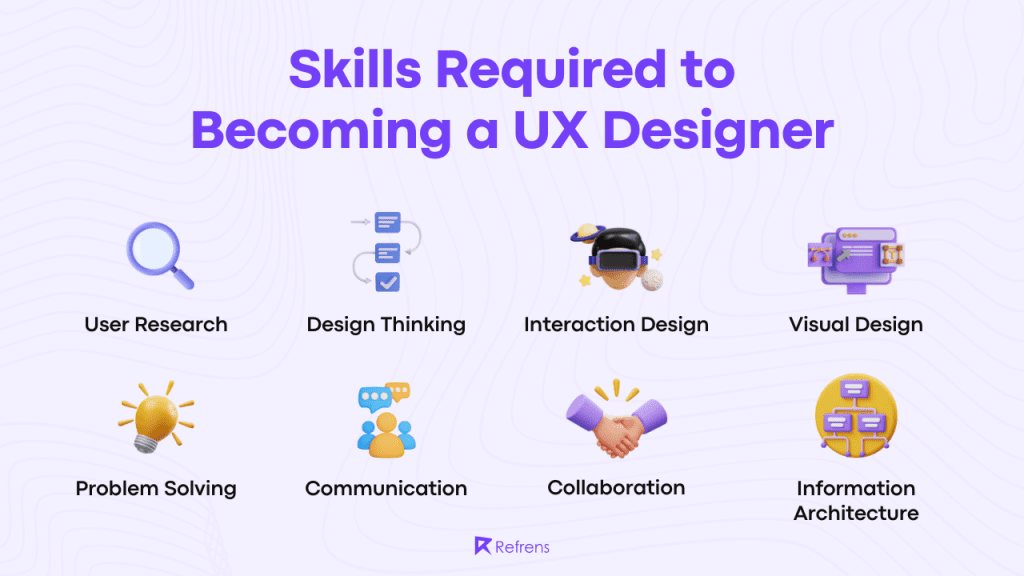
To become a UX (User Experience) designer, there are several important skills you should develop:
User research
User research is crucial for UX designers. Knowing how to conduct user interviews and usability tests is crucial to gathering data about user behavior and needs.
Design Thinking
The design thinking approach emphasizes empathy for the user, creativity, and adaptive design. UX designers should be familiar with this approach and know how to apply it to their work.
Information Architecture
It involves organizing and structuring information in a way that’s easy to follow, especially when using project management software for architects. It is essential that UX designers create clear information architectures.
Interaction Design
The goal of interaction design is to design users’ interactions with digital products. UX designers should understand interaction design principles and design intuitive, engaging user experiences.
Visual design
While visual design is not the primary focus of UX design, a basic understanding of visual design principles is still important for creating effective user interfaces.
Communication
UX designers should be able to communicate effectively with stakeholders, team members, and users. This includes being able to present and explain design decisions and gather feedback from stakeholders and users.
Problem-solving
Strong problem-solving skill is essential for UX design. Identifying problems and developing creative solutions is a must.
Collaboration
UX designers often work in cross-functional teams, so collaboration skills are important. This includes being able to work effectively with developers, product managers, and other team members to create successful digital products.
By developing these skills, aspiring UX designers can build a strong foundation for a successful career in UX design.
Also read: A comprehensive guide to become a web designer>
Do I Need A Degree To Become A UX Designer?
As a UX (User Experience) designer, a degree is not always necessary. While some employers may require a degree in design, psychology, computer science, or a related field, many companies focus more on an individual’s skills and experience.
There are many resources available to aspiring UX designers to help them develop their skills, such as online courses, bootcamps, and mentorship programs. Building a strong portfolio that showcases your skills and design aesthetic can also help you stand out to potential employers.
That being said, a degree in design or a related field can provide a strong foundation of knowledge and skills that can be valuable in a UX design career. Additionally, a degree program can provide networking opportunities and access to resources that can be helpful for career development.
Ultimately, the most important factor in becoming a successful UX designer is having a strong portfolio and the skills to create effective and engaging user experiences. While a degree can be helpful, it is not always necessary to have one to start a career in UX design.
Useful Resources
Podcasts
- UI Breakfast by Jane Portman
- Honest UX Talks by Anfisa Bogomolova and Ioana Teleanu
- Design better by Invision app
Books
- Universal Principles of Design
- The Design of Everyday Things
- 100 Things Every Designer Needs to Know About People
Blogs
Online Courses
Bootcamps
Youtube
How Long Does It Take To Become A UX Designer
The time it takes to become a UX (User Experience) designer varies depending on the individual and their learning path. Some people may become proficient in UX design through self-study and practice, while others may choose formal education or attend bootcamps.
Typically, a formal degree program in design or a related field takes 2-4 years to complete. Bootcamps or intensive programs can range from a few weeks to months. Self-study and practice can take anywhere from a few months to a few years to become proficient in UX design.
It’s critical to note that becoming a UX designer is an ongoing process of learning and growth. Even experienced UX designers continue to learn and develop their hard and soft skills over time. The key to success is to stay curious, learn, and practice and refine your skills.
Is UI Design Different From UX Design?
Yes, UX (User Experience) design and UI (User Interface) design are two distinct but related disciplines.
UX design focuses on creating a positive and meaningful user experience for a product or service, and businesses can benefit from utilizing UX audit services to optimize their digital interfaces. This involves understanding the needs and goals of users, conducting research and testing, and designing intuitive, easy-to-use, and engaging interfaces.
UI design, on the other hand, focuses on designing the visual and interactive elements of a product or service. This includes the layout, color scheme, typography, and buttons. UI design is about creating a visually appealing and functional interface that supports user experience goals.
Ready to join the ranks of the design wizards and create user interfaces that make users go ‘Wow!’? Look no further than this blog – your one-stop for all you need to start UI design!
While UX and UI design are closely related and often overlap, they are different areas of focus within the design process. A positive user experience requires both strong UX and UI design, as the visual and interactive elements of a product play a crucial role in shaping the user’s experience.
Various Roles In UX Design
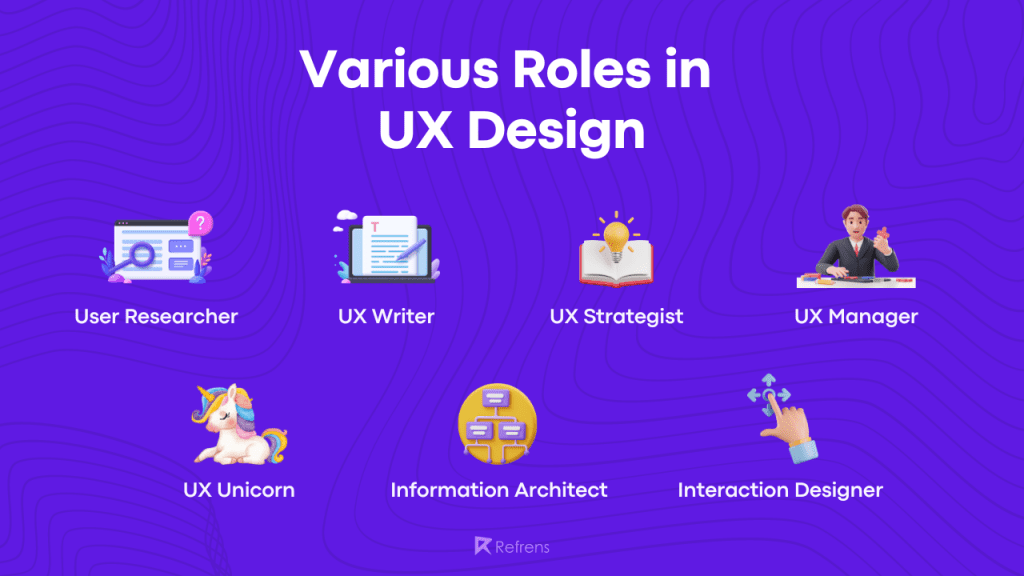
There are several types of UX (User Experience) designers, each with their own areas of focus and expertise. Here are a few examples:
User Researchers
They collect and analyze data about users’ needs, behaviors, and preferences. To inform the design process, they conduct user research through surveys, interviews, and usability testing.
Information Architects
Their goal is to organize and structure information so that users can easily understand it. In essence, they develop the sitemap, user flows, and wireframes that illustrate how a product or service will interact with the web.
Interaction Designers
They create buttons, forms, and animations for products and services. To design intuitive interfaces, they apply psychology and human behavior principles.
UX Writers
These designers craft clear and concise copy for labels, error messages, and instructions. Their goal is to ensure the language used in a product or service supports the user experience.
These are just a few examples of the many types of UX designers out there. In reality, many designers specialize in a combination of these areas or have additional areas of focus beyond what’s listed here.
UX Unicorn
A professional who possesses a diverse set of skills and can work effectively across various disciplines, such as user research, design, and development. In other words, a UX unicorn is a person who is a jack-of-all-trades in the UX field.
UX Strategist
A UX strategist is a professional who specializes in creating and implementing strategies for improving user experience (UX) in digital products, such as websites, mobile apps, and software. UX strategists combine their knowledge of user research, design thinking, business objectives, and technology to develop comprehensive plans that guide the development and improvement of digital products.
Their goal is to ensure that digital products meet the needs and expectations of users while also achieving the business goals of the organization. UX strategists may work in-house for a company or as consultants for multiple clients.
UX Manager
A UX manager is a professional who oversees the user experience design team and process within an organization. The UX manager is responsible for ensuring that the user experience design team creates and delivers effective and user-friendly designs that meet business goals and user needs. They typically have experience in UX design, design thinking, user research, and team management.
UX managers play a critical role in guiding the strategic direction of UX design within an organization. They collaborate with cross-functional teams, including product managers, developers, marketers, web-flow enterprise maintenance teams, and executives, to ensure that user needs and business objectives are aligned. They also oversee the hiring, training, and development of UX designers and may have a hand in setting team goals and budgets. Overall, the UX manager is responsible for the success of the UX design team and the impact of their work on the organization.
UX Design Tools
Here are some apps/tools that UX designers can use:
- Figma
- Abode
- Sketch
- Invision
- Principle App
- Zeplin
- Figjam
- Framer
Our Recommended UX Design Tool – Figma
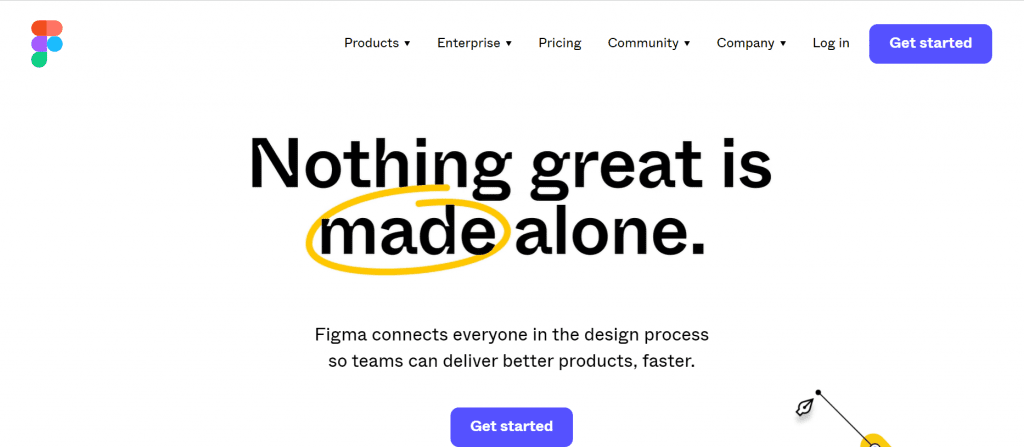
Figma is a great tool for designers because it allows multiple designers to work on the same project together in real-time, making it easier to collaborate and receive feedback.
- Figma is also cloud-based, meaning designers can access their designs from anywhere and on any device, making it easy to share designs with other team members or clients.
- One of the great features of Figma is that it has a built-in tool that allows designers to create interactive prototypes, which helps them test their designs before development.
- Figma also allows designers to create design libraries, which are collections of design elements that can be reused across multiple projects, ensuring consistency in design.
- In addition, Figma allows designers to create and edit vectors (shapes and images) directly within the platform, making it easy to create icons, illustrations, and other design elements.
- You also get access to the Figma Community. Where you can find thousands of templates, plugins, and UI kits, both free and premium, to help you start developing your next big idea.
- Finally, Figma has a lot of plugins that can help streamline workflows, making it a versatile and efficient tool for UX designers to use.
One thing you should always remember is that, no matter what tool you use, aim to become an expert in it. This will make things easier for you in the long run. Using that specific tool would be much quicker for you because your hands are already adjusted to it.
Many individuals think that since they know UX design, they should try another tool. Despite this, if you dive into learning more about a certain tool and really master it, you will soon realize that sticking with it was always the best option.
Creating a UX Design Portfolio
A well-designed portfolio is essential for any UX designer looking to showcase their skills and attract potential employers or clients. A good portfolio should not only showcase the designer’s work but also highlight their thought process and problem-solving skills.
Checklist to Create A Great UX Design Portfolio:
- Case studies: Include detailed case studies of your work
- Design process: Showcase your design process
- Deliverables: Include examples of your deliverables
- Visual design: Highlight your visual design skills
- UX Writing: Include examples of effective copy you’ve written
- Usability testing: Highlight your experience with usability testing
- Collaboration: Highlight your ability to work collaboratively
- Personal brand: Reflect your personal brand and design style
In summary, a good UX design portfolio should showcase the designer’s research process, design process, and creativity, as well as be well-organized and visually appealing. By presenting their work in a compelling way, UX designers can demonstrate their skills and attract potential employers or clients.
Check out the important elements of a portfolio website.
Need Inspiration? Check Out These Great Portfolios
Also read: Designing Your Narrative: Portfolio Inspiration from Top Professionals
Template For UX Design Portfolio
Introduction
- Brief introduction of yourself, your skills, and your design philosophy
- A list of your previous clients or employers, and notable awards or recognition
Case studies
- Choose 3-5 case studies that showcase your UX design skills and process
- For each case study, include:
- Project summary: A brief description of the project, the problem you were trying to solve, and the goals of the project.
- Research: Details about the research you conducted, including user interviews, surveys, and usability testing.
- Design process: Wireframes, prototypes, and visual designs that demonstrate your design process and iterations.
- Final product: Screenshots or videos of the final product, and an explanation of how the design solves the user’s problem.
- Results: Metrics or data that demonstrate the success of the design, such as increased engagement or customer satisfaction.
Skills and tools
- A list of your UX design skills, such as user research tools, wireframing, prototyping, and visual design.
- A list of the design tools you’re proficient in, such as Sketch, Adobe XD, Figma, and InVision.
Testimonials
- Quotes or testimonials from previous clients or employers that demonstrate your skills and expertise.
Contact information
- Contact information, such as email or LinkedIn, for potential employers or clients to reach out to you.
Remember, the key to a successful UX design portfolio is to showcase your skills and process in a way that’s easy to understand and visually appealing. Keep it simple, focused, and highlight your strengths.
Free Website To Create UX Portfolio
How To Get Your First Client As A UX Designer?
Ways to get your first client as a beginner UX designer:
- Attend local meetups and events
Attend local UX design meetups and events to meet other designers and potential clients. These events are great opportunities to network and find job opportunities.
- Use job boards and freelance platforms
Utilize job boards and freelance platforms like Dribble, Behance, Refrens, Upwork, Freelancer, and LinkedIn to find UX design jobs and projects. Be sure to optimize your profile and portfolio to stand out to potential clients.
- Offer your services to friends and family
Offer to design a website or mobile app for a friend or family member for free or at a discounted rate. This will give you experience and help you build your portfolio.
- Use social media to showcase your work
Use social media platforms like Twitter, Instagram, and LinkedIn to showcase your UX design work and connect with potential clients. You can use hashtags related to UX design to get more visibility.
- Create a niche for yourself
Identify a niche or area of expertise within UX design and focus on building your skills in that area. This will help you stand out to potential clients looking for specific skills or expertise.
Remember, getting your first client takes time and effort, but with persistence and determination, you can build a successful career as a UX designer.
Not sure how to price your first time customers? This guide will help you!
What To Do If I Don’t Get Projects As A UX Designer?
If you’re a UX designer and you’re not getting projects, there are a few things you can do to improve your chances of finding work:
- Build your portfolio
Make sure you have a strong portfolio that showcases your skills and experience. Make sure your portfolio includes examples of your work, your design process, and your ability to solve problems.
- Network
Attend industry events, connect with other designers, and participate in online communities to build your network. This can lead to potential job opportunities and also provide you with feedback on your work.
- Freelance
Consider freelancing or taking on contract work to gain experience and build your portfolio. You can find freelance opportunities on job boards or by reaching out to companies directly.
- Continue learning
Stay up to date with the latest design trends and tools. Take online courses or attend workshops to improve your skills and add to your portfolio.
- Improve your job search strategies
Make sure you are targeting the right companies, using the right keywords in your job search, and customizing your resume and cover letter for each job application.
Remember that finding work as a UX designer can take time and effort, but with persistence and hard work, you can land your dream job.
Conclusion
Congratulations! You’ve made it to the end!
By now, you should have a good understanding of what UX design is, what skills you need to become a UX designer, and some tips for building your portfolio and finding work.
Remember, becoming a UX designer takes time and effort, but with dedication and a passion for creating great user experiences, you can go far.
So go forth, design boldly, and make the world a better place, one interface at a time!
Cheers and Best of the luck!
